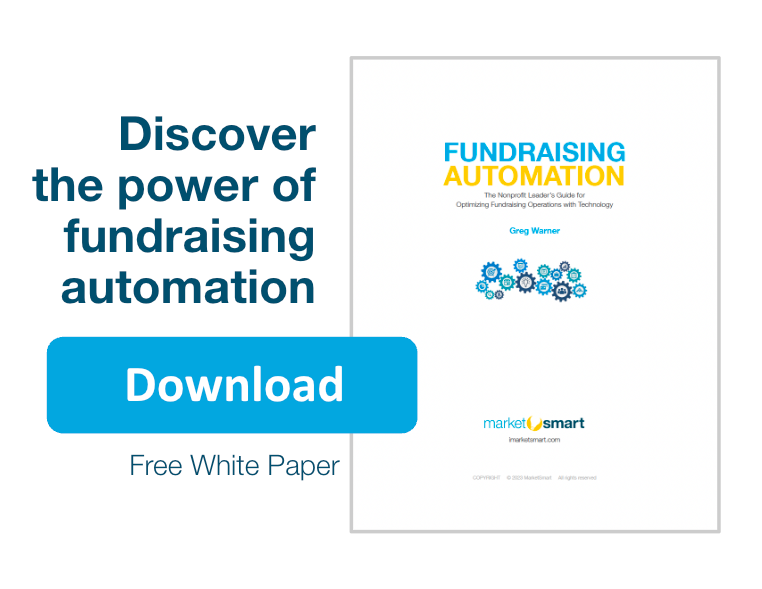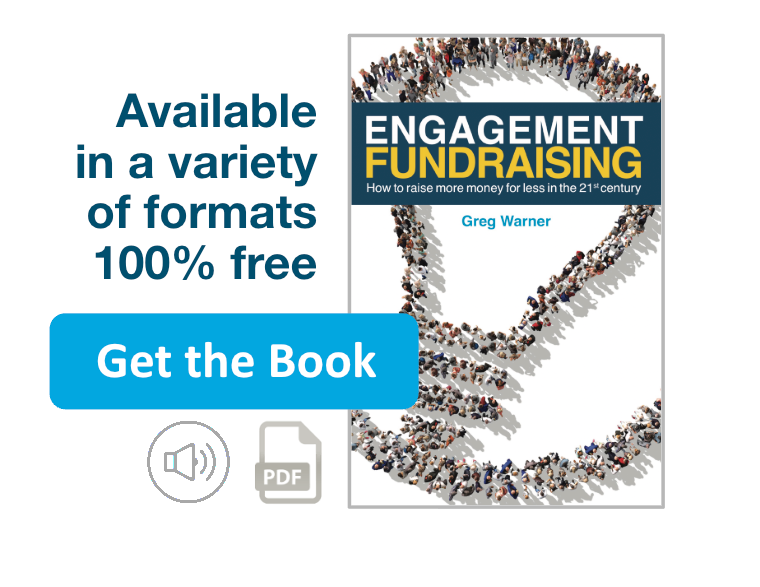Planned gifts often constitute some of the biggest gifts charities ever receive. But winning them requires you to make the donor think about their own death. Eww.
Isn’t there a better way to bring this up? As it turns out – yes!
We’re going to give you three legacy-giving language tools you can use to bring up the idea of a planned gift, and none of them require going near the subject of death.
The best thing about these planned giving strategies is that they are backed by research.
3 Legacy-Giving Language Templates
So, let’s look at the three legacy-giving strategies from Dr. James that enable you to bring up the idea of making a planned gift without having to make the donor think about their death.
This matters for obvious reasons. The idea of death is unpleasant, to put it mildly. But one less obvious reason is that death is also distracting. Thinking about mortality distracts the donor from dwelling on the impact of their gift, and that’s where you want their mind to be going.
Dr. James phrases these strategies as prefaces, because this is how you begin the legacy giving conversation. His three prefaces are:
- External issue preface
- Identity preface
- Victory preface
And while all three methods work, he saves the best for last. So be sure and read through to the end.
External Issue Preface
Starting a legacy giving conversation using an issue unrelated to the donor is an external issue preface. Why would a donor give to something that doesn’t directly relate to them? They do it all the time for causes they care about.
Examples of external issue prefaces include:
- Campaigns to acquire a certain number of new legacy donors
- Capital campaign deadlines – especially when those deadlines are not in the control of the organization, such as an expiring construction deal with a developer or builder
- A matching gift from another donor tied to new legacy donors
- A problem presented to the donor
- “It’s my job”
The motivation for each of these is external, but they will still give because it helps an organization they care about.
Let’s unpack a few of these.
Legacy matching gift
The matching gift idea would look something like this: For each new planned gift pledge, a different donor will donate a certain amount of money. For example, for each new legacy donor, this other donor will give $1000. If the organization gets 100 new donors, that donor would be giving $100,000.
This sort of idea would have strong appeal to other major donors, because now their pledge of a legacy gift results in even more money for the organization they care about.
A problem presented to the donor
A good example of this is to present a situation to the donor that they want to help solve – one that relates to planned giving. The legacy giving language for this situation might look like this:
“We need your advice about why fewer people are joining our legacy society lately.”
This strategy works best with donors who are predisposed to want to utilize other aspects of their expertise or work experience to help an organization they care about. Such donors are part of the ‘Ruler’ donor archetype, one of 12 types of donors that align with classic literary archetypes. See all 12 donor archetypes and how to appeal to them.
“It’s my job”
This one works better than you might think. Donors don’t often realize at first that planned giving is “a thing” that merits having a full-time gift officer devoted to it for an organization. Letting them know that it’s your job to help donors make planned gifts will help them realize that lots of donors do this.
And if you phrase it in a way that positions planned giving well, this approach can work great. You might say something like this:
“It’s my job to help donors plan their gifts so they can make a lasting impact that is personally meaningful to them.”
Isn’t that a better job description than “I raise money for a charity”?
Identity Preface
These prefaces come in ascending order of greatness. So, next on the list is the identity preface.
This works great when you know the donor well enough to tap into their identity and show them how making a planned gift will fulfill them.
The idea with an identity preface is to link giving major gifts or planned gifts to the donor’s values, life history, or people who they relate to or care about.
The operating phrase here is, “People like me make gifts like this.”
For example, alumni who own businesses make planned gifts to the university. People from my neighborhood make gifts to the arts. People with my background make gifts to their community. People who give for this many years leave legacy gifts in their estate plans.
You can phrase the identity preface in various ways. Here are a few:
- “Many donors who give as regularly as you have put our organization in their will; what are your thoughts about doing that?”
- I can’t say thank you enough for all your support for so many years. Would you consider extending your amazing legacy by including us in your will?”
- “Some of the people I meet with are interested in hearing about ways to honor and memorialize their loved ones. Would you like to hear more about this option?”
You can adapt these phrases to have the greatest impact by creating language that touches on each donor’s identity, which you have drawn out over your previous conversations with them.
Victory Preface
Saving the best for last, the victory preface is the most powerful form of legacy giving language, because it helps the donor visualize a specific outcome that matters to them, but with permanence. In other words, it integrates their identity into the goal of the gift, and thus enables them to gain what Dr. James calls “symbolic immortality,” or a way to extend their autobiography indefinitely.
Permanence inspires bigger gifts because you can picture the result of the gift. And the appeal of permanence is backed by research.
In one study, a charity described itself as “meeting the immediate needs of people” for one group, and as “creating lasting improvements that would benefit people in the future” for another group.
For typical fundraising audiences, the first description would produce a higher response. But among older audiences thinking about their legacy and mortality, the results reversed.
The key language for victory prefaces revolves around the idea of a “lasting impact.” Here are a few examples of legacy giving language templates you can use.
- “Would you consider leaving a legacy of a $100,000 bequest to ensure that the help you provide these families will continue in perpetuity?”
- “You’ve been such a wonderful friend to [this charity] over the years. Many people like you want to include a gift in their will. My job is to help them plan that out so their gift will make a lasting impact. Do you mind if I share some options with you?”
- “Tell me, what would you like to accomplish with your gift?”
- “Have you ever thought about how you would like your gift to be used?”
Notice how those last two questions help frame the discussion around what their gift will achieve – and continue achieving forever – even after they’re gone.
You can follow those up with language that references the donor’s identity, defines a victory, and presents a challenge – all core components of the greatest stories of literature. And the donor’s life is their own story. That’s why Dr. James says the most important goal of a gift officer is to help supporters advance their personal hero stories. Do that, and you win the biggest, most enthusiastic gifts.
Here are examples of that follow-up language:
- “The reason I ask is this. You remind me of another donor I worked with. You both have a real heart for this cause.” This references identity.
- “He decided to create a permanent endowment for a scholarship. It will … [here you should describe the impact].” This defines a victory.
- Finish by saying… “This will come from a $100,000 gift in his will. Would that type of gift appeal to you?” This presents a challenge.
Another Legacy Giving Language Strategy
All three of those prefaces work very well for planned giving conversations that avoid the need to think about death.
Another great research-backed strategy is called the 4S Method, which we wrote about here.
Related Resources:
- How to Help Your Wealthiest Supporters Solicit Themselves
- 4 Primal Motives for Major Gifts – the REAL Reasons People Make Transformational Gifts
- Major Donor Stewardship – Million Dollar Experiences for Million Dollar Donors
- 10 Questions You Should Ask Your Wealthy Supporters to Motivate them to Give





Thanks! I’m always looking for some new phrases to inspire my major gift colleagues to bring up legacy gifts with their donors… many are great PG prospects. 🙂